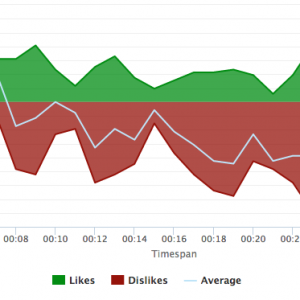Understanding the Impact of Branding on Your Business

In today’s competitive market, building a strong and recognizable brand is essential for businesses of all sizes. Branding refers to the process of creating a unique name, message, and image for your products or services that sets them apart from competitors. But what is the true impact of branding on your business, and why is it so important to get it right?
The Importance of Branding in Today’s Market
A strong brand is crucial for success in today’s market. Consumers are bombarded with countless advertisements and choices, and a well-defined and memorable brand can help you stand out from the crowd. A strong brand increases brand recognition, builds trust and loyalty with customers, and ultimately drives sales and revenue growth. In fact, businesses with strong branding efforts typically experience a 23% increase in revenue compared to those without.
Building Brand Recognition
Building brand recognition is a critical component of successful branding. This involves creating a memorable brand image, message, and tone that resonates with your target audience. Consistency is key when building brand recognition. Your brand should have a consistent look, feel, and voice across all channels, including your website, social media pages, advertisements, and products or services.
One way to build brand recognition is through effective storytelling. By sharing the story of your brand, you can create an emotional connection with your audience and build brand loyalty. For example, if your brand was founded with a mission to provide sustainable and eco-friendly products, you could share the story of how your founder became passionate about environmentalism and the steps your brand takes to reduce its carbon footprint.
Another way to build brand recognition is through partnerships and collaborations. By partnering with other brands or influencers that align with your values and target audience, you can increase brand exposure and attract new customers. For example, a sustainable fashion brand could partner with a well-known eco-friendly blogger to promote their products and reach a wider audience.
Creating a Competitive Edge
A strong brand can also help you stand out in a crowded market. By developing a unique brand identity and communicating your unique value proposition to customers, you can set your business apart from competitors. This can help you attract new customers and retain existing ones, ultimately driving sales and revenue growth.
One way to create a competitive edge is through exceptional customer service. By providing a positive and memorable experience for your customers, you can create a loyal customer base and differentiate yourself from competitors. This could include offering personalized recommendations, responding quickly to customer inquiries or complaints, and going above and beyond to exceed customer expectations.
Another way to create a competitive edge is through innovation and creativity. By constantly evolving and adapting your brand to meet changing customer needs and trends, you can stay ahead of the competition. This could include introducing new products or services, experimenting with new marketing strategies, or exploring new partnerships and collaborations.
Enhancing Customer Loyalty
Strong branding efforts can also lead to increased customer loyalty. When customers identify and connect with your brand, they are more likely to become repeat customers and recommend your products or services to others. This can help you build a loyal customer base and establish your business as a trusted provider in your industry.
One way to enhance customer loyalty is through community building. By creating a sense of community around your brand, you can foster a deeper connection with your customers and encourage them to engage with your brand on a regular basis. This could include hosting events or meetups, creating a branded social media group or forum, or featuring customer stories and testimonials on your website or social media pages.
Another way to enhance customer loyalty is through social responsibility. By demonstrating a commitment to social and environmental issues, you can attract customers who share your values and build a positive reputation for your brand. This could include donating a portion of your profits to a charitable cause, using sustainable and ethical production practices, or supporting local communities through volunteer work or partnerships.
Conclusion
In today’s competitive market, branding is more important than ever. A strong brand can help you stand out from the crowd, attract new customers, and build a loyal customer base. By focusing on building brand recognition, creating a competitive edge, and enhancing customer loyalty, you can establish your brand as a trusted provider in your industry and drive long-term success for your business.
Elements of a Strong Brand
Creating a strong brand involves several key elements that work together to create a cohesive and memorable brand identity. These elements include:
Brand Identity and Visuals
A strong brand identity involves creating a unique name, logo, and design elements that set your brand apart from competitors. However, it’s not just about having a pretty logo or catchy tagline. Your brand identity should also reflect your company’s values and mission statement. For example, if your company values sustainability, your brand identity should incorporate eco-friendly elements such as green colors or recycled materials. This visual identity can help create a lasting impression on customers and establish credibility in the market.
It’s also important to consider the usability of your brand visuals. Are they easily recognizable and scalable across different mediums? Will they still make sense in black and white or grayscale? These are all factors to consider when developing a strong brand identity.
Brand Messaging and Tone
Your brand messaging and tone should be carefully crafted to reflect the personality of your brand and align with your target audience. It should be consistent across all channels, including your website, social media pages, and marketing materials. Your messaging should communicate the value proposition of your products or services, and highlight what sets your brand apart from competitors.
When developing your brand messaging, consider the language and tone you use. Are you formal or casual? Serious or playful? The tone you choose should be appropriate for your target audience and industry. For example, a law firm may want to use a more formal tone, while a fashion brand may opt for a more playful and trendy tone.
Consistency Across Channels
Consistency is key when it comes to branding. Your brand should have a consistent look, feel, and voice across all channels, including your website, social media pages, advertisements, and products or services. This helps build brand recognition and establishes trust with customers.
It’s important to ensure that your branding is consistent not only visually, but also in terms of messaging and tone. If your social media pages have a playful tone, but your website is more formal, this can create confusion for customers and weaken your brand identity. By maintaining consistency across all channels, you can build a strong and recognizable brand that customers will trust and remember.
The Role of Branding in Marketing
Branding plays a critical role in marketing efforts. By developing a strong brand identity and message, you can effectively target your ideal customer and differentiate your products or services from competitors. This involves crafting a unique selling proposition (USP) that focuses on what sets your brand apart from others in the market.
Targeting Your Ideal Customer
When developing your brand, it’s essential to identify and understand your target audience. This involves creating customer personas and conducting market research to understand what motivates your customers and what they are looking for in a brand. By targeting your ideal customer, you can create a message and identity that resonates with them and builds loyalty.
For example, if you are a fitness brand targeting millennials, you may want to focus on the convenience and community aspects of your gym or workout classes. You may develop a message that emphasizes how your brand can fit into their busy lifestyle and provide a supportive community to help them reach their fitness goals.
Crafting a Unique Selling Proposition
Your unique selling proposition (USP) should communicate the unique benefit of your products or services and how they solve your target audience’s problems. By crafting a clear and compelling USP, you can differentiate your brand from competitors and effectively market your offerings.
For instance, if you are a skincare brand, your USP may be that your products use all-natural ingredients and are cruelty-free. This may appeal to customers who are environmentally conscious and want to use products that align with their values.
Utilizing Social Media and Content Marketing
Social media and content marketing are powerful tools for brand building and marketing. By creating compelling and relevant content that aligns with your brand, you can reach a wider audience and establish your brand as an expert in your industry. Social media also provides a platform for engaging with customers, building relationships, and increasing brand awareness.
For example, a food brand may create a blog with recipes and cooking tips that align with their brand message. They may also use social media to showcase their products in use and engage with customers by responding to comments and messages.
In conclusion, branding is a critical component of marketing that allows you to effectively target your ideal customer, differentiate your brand from competitors, and build a loyal customer base. By crafting a strong brand identity, message, and unique selling proposition, and utilizing social media and content marketing, you can establish your brand as a leader in your industry and drive business growth.
Measuring the Success of Your Branding Efforts
Measuring the success of your branding efforts is essential for understanding the impact of your brand on your business. There are several metrics to consider when evaluating brand performance, including:
Brand Awareness Metrics
Brand awareness metrics, such as social media engagement, website traffic, and brand mentions, can help you understand how well your brand is resonating with your target audience. By tracking these metrics, you can identify areas for improvement and adjust your branding efforts accordingly.
Customer Engagement and Retention
Customer engagement and retention metrics can help you understand how loyal customers are to your brand. This includes metrics such as customer lifetime value, customer satisfaction, and retention rates. By tracking these metrics, you can identify ways to improve customer loyalty and retention, ultimately driving sales and revenue growth.
Sales and Revenue Growth
Finally, sales and revenue growth are critical indicators of the impact of your branding efforts. By comparing sales and revenue before and after implementing branding initiatives, you can understand how your branding efforts are contributing to business growth and identify ways to optimize your branding strategy in the future.
In conclusion, branding plays a critical role in the success of your business. By building a strong and recognizable brand, you can differentiate your products or services from competitors, build trust and loyalty with customers, and ultimately drive sales and revenue growth. By following these key elements of successful branding and measuring the impact of your efforts, you can establish your brand as a leader in your industry and achieve long-term success.








